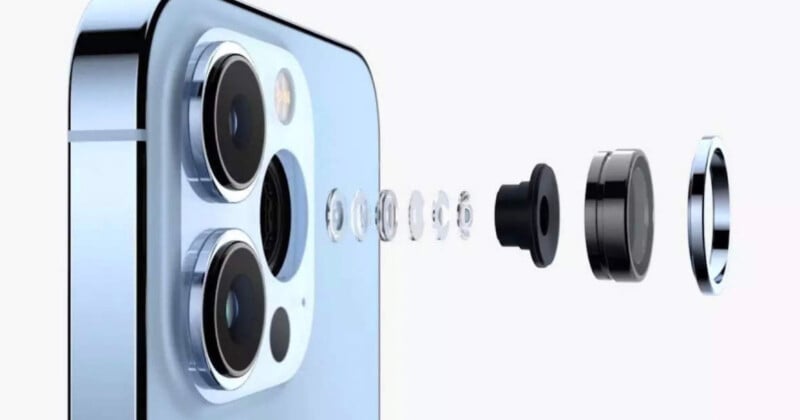
Improved sensor designs have made iPhone and Android smartphones a hot topic among hobbyists and professional creators. However, one area where image sensors have lagged in development is image stabilization. In an important development, a recent patent granted to Apple signals a potential revolution in this field.
Advances in sensor resolution, color rendering, and workflows have made it possible to use mobile phones for social media content creation, commercials, and even television and film production. However, even the best smartphone cameras have to keep up when there’s movement, highlighting the limitations of optical image stabilization within relatively small smartphone camera modules.
Although innovative, the digital image stabilization used in smartphones such as the iPhone is essentially a sophisticated form of cropping and object tracking. These systems attempt to stabilize the image by centering the moving subject, resulting in lower resolution and poorer image quality.
Because the cropped video is smaller than the original, the resulting footage will have a lower resolution than the source footage. Even a capable system like the iPhone’s Action Mode can’t match the post-production stabilization of apps like Resolve and Premiere.
![]()
Optical image stabilization, also known as OIS, IS, OS, or VR, is already included in many interchangeable camera lenses. Optical stabilization allows components within the lens to move and counteract movement.
Optical image stabilization in smartphone camera systems isn’t new, but it’s not yet a standard feature. The most impressive OIS is in Sony’s Xperia lineup, but these phones have not yet gained much popularity in the American market. Other companies such as Huawei, Vivo, and OnePlus also offer phones with his OIS, but these brands are not yet widely available.
So while Apple’s patent doesn’t break new ground when it comes to optical stabilization for smartphone cameras, it does show that the company is actively developing improved stabilization. This patent describes a system that Apple uses to design and manufacture image stabilization systems.
This patent, “Voice Coil Motor Optical Image Stabilization,” isn’t particularly fascinating reading, but it describes Apple’s engineering approach to solving motion artifacts. In other words, Apple is not patenting image stabilization itself, but rather a new approach to achieving stabilization.
![]()
Apple’s current image stabilization moves components across two axes to counteract motion. The patent describes a more advanced system that uses magnets and several motors to provide image stabilization in additional axes, which is expected to improve performance and reliability.
Apple has acknowledged that current OIS technology is susceptible to certain high-amplitude vibrations, so it will be interesting to see if a different approach to stabilization proves more durable. Sho. At the moment, Apple recommends vibration-damping mounts for certain users, especially those who attach his iPhone to mopeds, scooters, and drones.
As the name suggests, voice coils are commonly used in microphones and speakers and operate at high speeds with very low power. The use of voice coils as drivers for image stabilization is well known, but the technology to drive image sensors in small devices like smartphones is difficult to obtain.
The patent also describes how magnets within a smartphone’s camera system can precisely control the position of various components to improve image quality. For example, if parts of the lens are not perfectly parallel to the image plane, image sharpness can be adversely affected. If Apple could use position measurement and correction magnets to adjust components during use depending on a particular user’s movements, Apple engineers could squeeze better performance out of the tiny lenses in smartphone camera modules. It may be helpful.
Patents do not indicate when or if technology will be brought to market. However, since Apple has been granted the patent, it is now free to manufacture devices with the described optical image stabilization technology.
Apple’s developments often prompt other companies to follow suit, so this patent could be the catalyst for image stabilization systems in the broader smartphone market. Either way, we’ll likely see an iPhone with improved optical image stabilization sooner or later.

